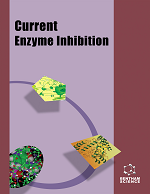
Full text loading...

Heterocyclic compounds containing oxygen, nitrogen, and/or sulfur atoms are of significant importance in drug discovery and development. Pyrazole moieties, in particular, have broad applications across various fields, including herbicides, corrosion inhibitors, electron transport materials, polymers, and luminescent materials. This underscores the growing need in medicinal chemistry to design new anticancer agents that improve therapeutic efficacy and safety.
A series of novel pyrazole-naphthalene derivatives were synthesized from chalcones, which were obtained through an aldol condensation between benzaldehyde and acetophenone, followed by a Claisen-condensation reaction. All the synthesized compounds were characterized by NMR and IR spectrum examinations, as well as C, H, and N analyses. The synthesized compounds were screened for biological activity against the breast cancer cell line (MCF-7 strain) using an MTT assay. Furthermore, a molecular docking study was performed to elucidate the binding modes of synthesized ligands in the active pockets of the three-dimensional crystallographic structure of CDK2 in complex with inhibitor RC-1-148 (PDB ID: 3QTR) for further predicting the mechanism of action.
Molecules R5, R8, and R9 were found to be the most active compounds in the series, exhibiting sensitivity of up to 5.0 μg/ml. Additionally, compounds R8, R13, and R10 demonstrated activity against cancer cells, with sensitivity reaching up to 3.2 μg/ml.
This study presents a promising class of pyrazole-naphthalene derivatives with significant anticancer activity, particularly against the MCF-7 breast cancer cell line. The combined biological screening and molecular docking suggest that these compounds could serve as potential lead candidates for further development in anticancer drug discovery.
The current study highlights the unique structural characteristics and significant biological activity of the synthesized compounds. In the pursuit of novel anticancer molecules, these compounds could prove beneficial to society.